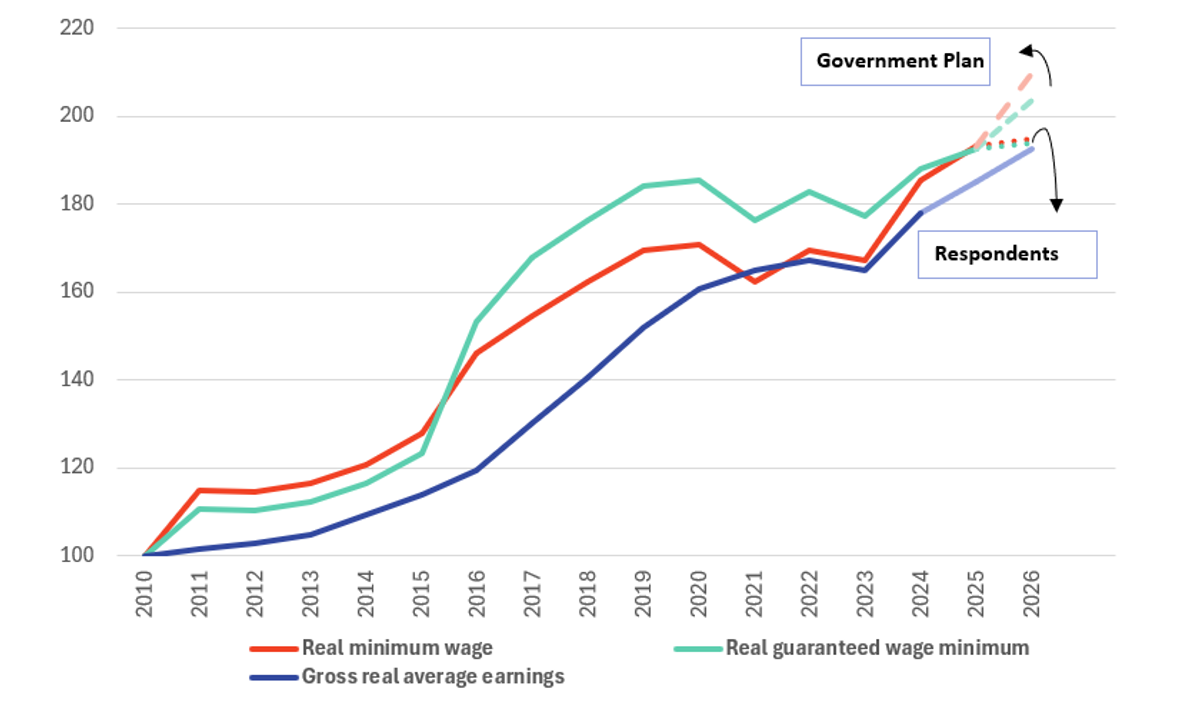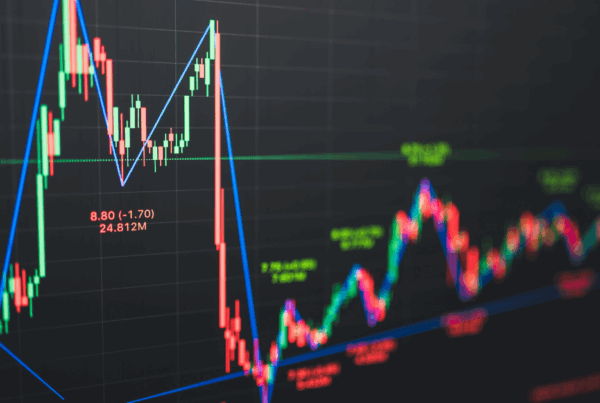
The government planned a 13% minimum wage increase and a 10% guaranteed wage minimum increase for 2026. This follows the fact that in 2024, a three-year wage agreement was concluded between employer and employee representative organizations and the government. However, due to economic growth falling drastically short of expectations and a higher level of inflation, the scale of the expected increases is currently uncertain, and wage negotiations are still ongoing.
In October 2025, GKI conducted a corporate survey on the 2026 minimum wage increase, which was responded to by 1,460 employers. Among the surveyed companies, 12% of the workforce are minimum wage employees, and a further 15% receive the guaranteed wage minimum. According to their own statements, the respondents could increase the minimum wage and the guaranteed wage minimum by an average of up to 5%, which falls significantly short of the planned 10-13% increases.
The 5% minimum wage increase falls short of the expected total gross wage growth, but in real terms (adjusted for inflation) it represents a 1% increase. Interestingly, there was no significant difference in the responses between sectors or different company sizes: in all categories, both the average and the median were around 5%.
Change in real minimum wage, real guaranteed wage minimum, and real average earnings, 2010=100% (2010-2026, gross values)

Source: KSH, Government, GKI survey
Between 2010 and 2019, the real value of the minimum wage (+70%) and the guaranteed wage minimum (+85%) grew dynamically. In the subsequent period, the coronavirus crisis, followed by weak economic growth and soaring inflation triggered by Russia’s invasion of Ukraine, negatively affected the purchasing power of the lowest earners. During these years, the real minimum wage and the guaranteed wage minimum stagnated or slightly declined. A positive development is that in 2024, nominal values increased amid low inflation, resulting in growth in real terms as well (minimum wage: +11%, guaranteed wage minimum: +6%). In 2025, the process continued, albeit at a slower pace, with the real value of the minimum wage increasing by 4% and that of the guaranteed wage minimum by 2%.
For most of the examined period, the growth of the gross minimum wage and the guaranteed wage minimum exceeded the increase in gross average earnings in real terms. The index of the minimum wage and average earnings converged by the early 2020s, but from 2024 onwards, a divergence reappeared: the minimum wage is increasing faster than the average earnings.
The possibilities for increasing the minimum wage are debated not only in public discourse but also in academic circles. Generously raising it can help the most vulnerable groups and support wage increases at levels close to the minimum wage. This can have a positive effect on consumption, as lower-income earners typically spend their additional income. Furthermore, it can improve the budget situation—which is currently under strain—through higher VAT, social contribution, and personal income tax revenues. Reducing wage disparities would also bring numerous social benefits that are difficult to quantify.
On the other hand—as our survey also revealed—companies would find it difficult to finance such increased wages in the current economic situation, and any potential layoffs would partially or fully offset the positive effects of a dynamic increase. Although the Hungarian labor market is tight, minimum wage earners typically have more difficulty finding new jobs, partly due to their qualifications and partly for geographical reasons.







